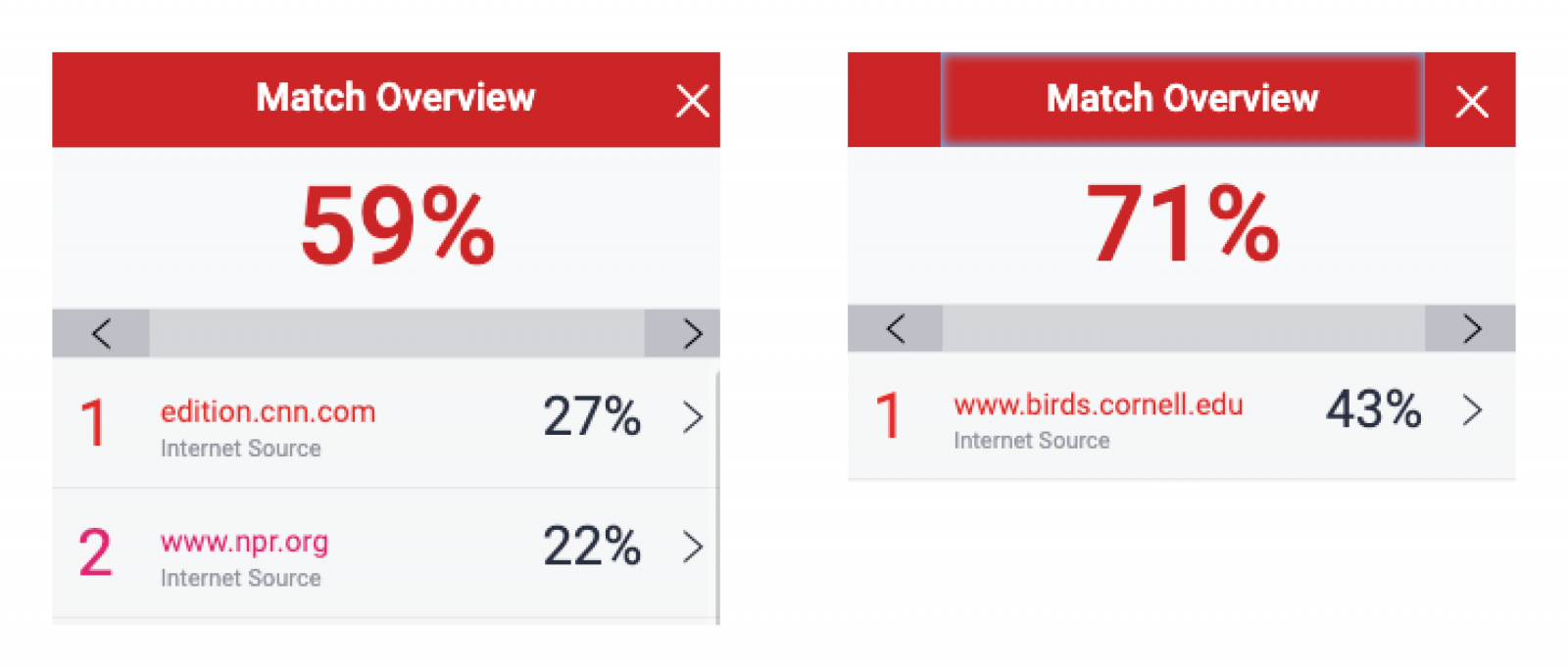One of the most disappointing experiences when grading student writing is encountering a paper with a large section of text copied directly from a source. Turnitin reports present this fact especially starkly, with long sections of highlighted text and high percentage matches to source texts.

A large section of copied text in a student paper might also consist of so called “patchwork plagiarism” in which several sources are stitched together with very little of the student’s own language. In Turnitin, this would appear as a long block of text highlighted in several different colors.
How to Respond to the Student
Your response to the student should affirm that you’re aware of the extent of the copying—that this is more than just a few lines—and that this is a serious violation of academic honesty (and of Yale College policy). A conversation about plagiarism of this magnitude is best done in person.
What You Can Do in Class
All students know that this kind of large-scale copying is plagiarism. It continues to occur not because students are confused about conventions, but because they’re working at the last minute on an assignment they feel is beyond their skill. Here are two things you can do to help keep your students from writing under the kinds of panicked conditions that lead to plagiarism:
1. Assign your students to draft short sections of the paper before the final draft is due. Ideally students will receive feedback on their work from their instructor, TF, or peers. But even if no feedback is provided, requiring students to get a head start writing their papers will reduce the stress of preparing the final draft. It may also earn you the pleasure of grading a stronger set of papers.
Assigning partial drafts is especially important for longer papers, as the stress of writing a 10-page paper at the last minute is likely to be a lot higher than the stress of writing a 3-page paper under the same conditions.
2. Include a late-paper policy on your syllabus. If students know ahead of time that submitting a paper a day late will cost them, say, a third of a letter grade, they may be less likely to risk copying large sections of their sources than they would be it they thought a late paper would not be accepted.
For more ideas on how to teach students about source use and reduce plagiarism in your course, see the Poorvu Center’s resources on preempting plagiarism, revising assignments to reduce opportunities to plagiarize, and teaching directly about plagiarism and academic integrity.
